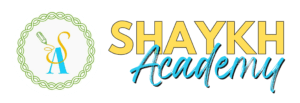Lesson 29 – Young Scientist - 2
A mouse in the house
What you need:
Cardboard sheets, pencils, crayons, scissors, ruler, etc. a punch (a tool for making holes in paper).
What you do:
- Cut out a rectangle from the cardboard sheet. It should be about 7cm × 10cm in size.
- Make holes on each of its longer sides, as shown. See that the holes are exactly opposite each other.
- Now draw the picture of a mouse on one side of the cardboard rectangle. Draw the picture neatly near the middle of the rectangle as shown.
- Turn over the cardboard rectangle. The mouse side should be down and the blank side should be up.
- Now draw a house near the middle of the blank side. The picture of the house should be larger than the picture of the mouse.
- Colour the picture of the mouse if you like.
- Now take two pieces of string, each about 19 cm long.
- Thread a string through each hole. Tie knots in each string to make a loop. Thus, you have the cardboard rectangle strung through the two holes.
- Hold the string loops between the thumbs and forefingers, one loop in each hand.
- Twist the threads several times. Then pull the loops out a little. The cardboard will start twirling.
What picture do you see on the cardboard?
Right! You will see that the mouse has entered the house!
How did this happen? When did the mouse travel?
Now stop twirling the cardboard. You will find that the mouse has gone back to his place on the other side of the sheet.
Explanation:
When you see something, your eye remembers the picture for a very tiny bit of time. If you show it a second picture within that tiny bit of time, it sees’ both the pictures at the same time. The mouse does not really move at all!
You can also paste a stick between two discs or squares of paper, and quickly twirl the stick. If there are two different pictures on the two visible sides, you will see them as one picture.
Try this simple experiment and surprise your friends! Here are some ideas for your experiment.
You may use your own ideas to make this amazing toy.
